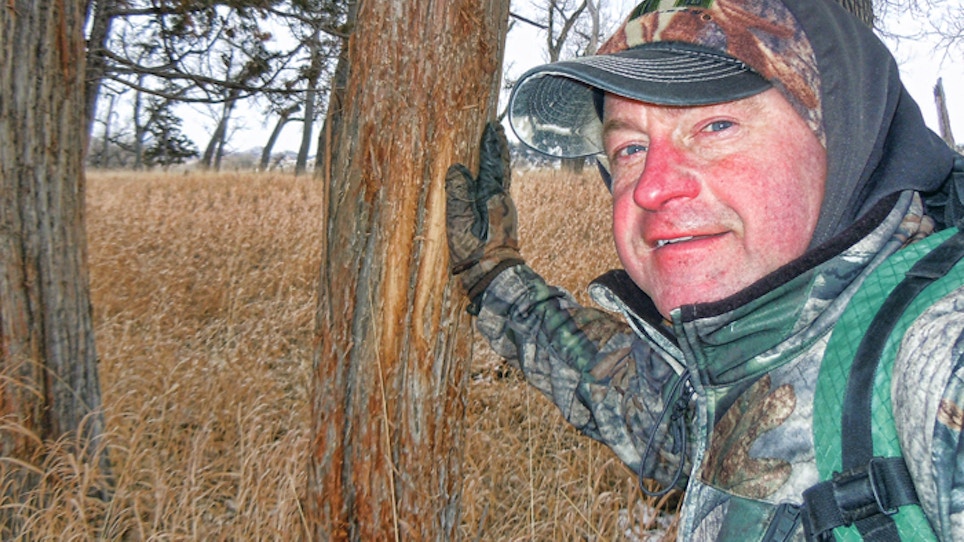Secretive October whitetails confound owners of private, manicured whitetail properties with their undercover antics. And they present quite a quandary to public-land bowhunters and those that share properties with others. Regrettably, this behavior repeats every October – it’s ingrained in a buck’s character to transform from a socialite bachelor to a shadowy curmudgeon that occasionally is seen in public.
Fortunately, the covert lifestyle is short-lived. Toward the end of the month, bucks begin to lose their eccentric existence and turn their attention to procreation. Their character can turn from withdrawn to outgoing with one good dose of testosterone, giving you more than enough action to focus on for a successful October ending. Until that time, consider hunting one of these secret locations for October whitetails.
Mast Mayhem
Mast crops are a whitetail’s form of kryptonite, and October is the month when many mast crops, hard or soft, hit the ground. 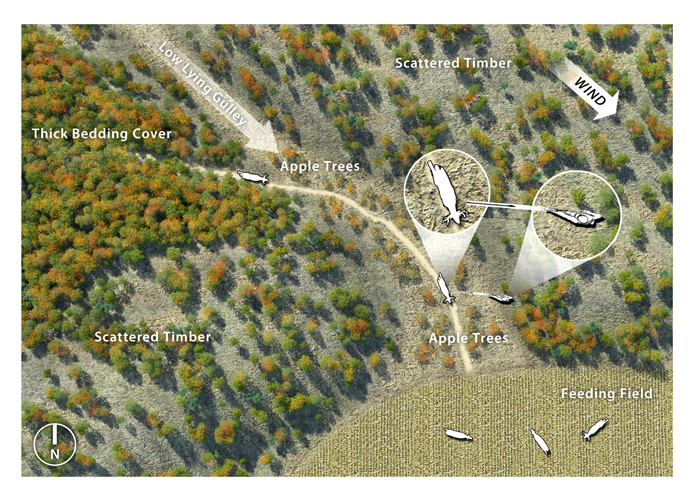 Hidden mast options give elusive October whitetails a carbohydrate boost that adds pounds of fat without having to visit food plots during daylight.
Hidden mast options give elusive October whitetails a carbohydrate boost that adds pounds of fat without having to visit food plots during daylight.
Annual scouting is a must while inventorying a whitetail hunting property. August and early September are good periods to survey mast locations. Foresters note the last two feet of a healthy branch is best to focus on for a rating. In white oaks, 12 or more acorns indicate a good crop. In red oaks, look for 16 or more. Try to schedule
visits to allow a week or more for your intrusion to fade in deer memory banks prior to hunting. Trail cameras also offer insight on the travel patterns around mast hotspots.
You’ll hear different schools of thought on how to set up near mast. Terrain, trails and cover will dictate your ambush location. And as with all food ambush locations, mature deer exhibit jumpy and jittery behavior as they scan a feeding area for danger. A treestand 50 yards back on a main trail may be a better choice to waylay a suspicious buck before it ramps up security onsite.
Water Waylay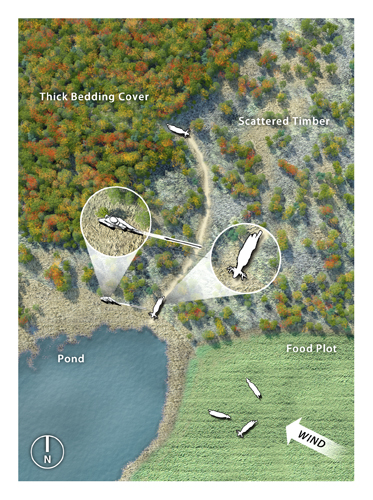
Whitetails need water daily to survive, and this requirement may just lure an uncooperative October buck into the location of your choosing.
If your property includes a trickling stream or river, look for heavily used trails leading to areas where the bank slopes gently toward the water source. Bucks will gravitate toward these easy locations as opposed to diving off a steep bank into a setting with limited visibility.
Properties with limited water excel in ambush prospects, particularly if the water source resides in hidden timber or standing crops. If your property doesn’t offer water, create a small pool at any natural spring with minimal damming efforts via hand tools. A rented skid steer loader can build a secluded, ridgetop reservoir over a weekend.
Like a specific acorn-producing oak, target trails coming and going to a water source with a stand removed by 50 yards or more. If you want to ambush whitetails with a pronghorn-like approach, confirm prevailing winds and then place your treestand or ground blind weeks in advance so it becomes as everyday as a fallen tree along the trail.
Interior Entrapment
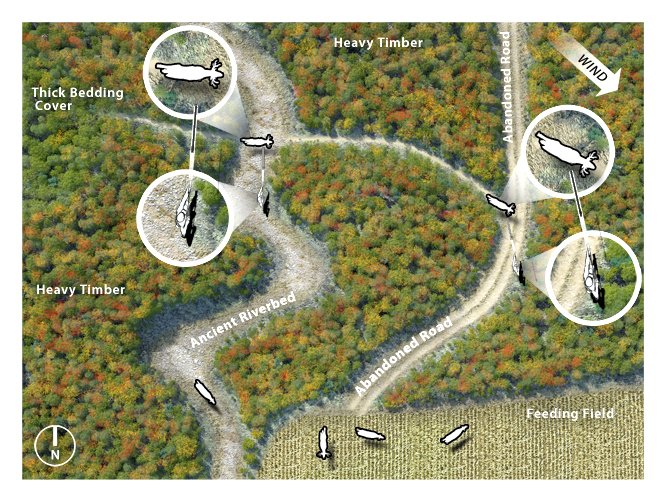 The phrase “whitetails are creatures of the edge” has merit, but it doesn’t mean a total commitment to edges that include an open field up against impenetrable timber. As you evaluate edge stand locations, look beyond the field and into the shadows for interior edges a buck may follow during shooting light.
The phrase “whitetails are creatures of the edge” has merit, but it doesn’t mean a total commitment to edges that include an open field up against impenetrable timber. As you evaluate edge stand locations, look beyond the field and into the shadows for interior edges a buck may follow during shooting light.
Be on the lookout for dry creeks, old riverbeds, fence lines, abandoned roads and forgotten hedges. In addition to providing whitetails terrain structures to track along, these edges also give clues as to whether deer are using them. Look for scrapes and rubs to determine if a trail camera needs to stand electronic guard for you.
Another sanctuary is standing crops like corn, sunflowers and sorghum. These jungles may seem impassable, but snoop inside for more concealed edges. Oftentimes, large fields include areas too wet to farm, cropless sections due to a planter malfunction, small reservoirs and even a row of trees. Follow any opening into the corn from a downwind position for the possibility of discovering possible edges where whitetails may show during shooting light.
Rub-Carpet Treatment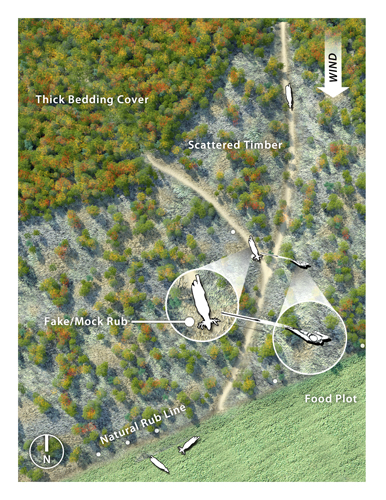
Visible rubs occur in fairly obvious edges, but those are exactly the areas often avoided by low-key October whitetails. Move inside the timber, and rubs become less frequent, but they still can reveal a pattern to help you home in on a buck travel route.
Begin your investigation on field edges where the edge effect attracts most rubbing. As you discover larger rubs, look for adjacent trails and rubs along that route. Trail cameras are invaluable, but time is of the essence so use footwork first and trail cameras as later confirmation. Obviously, the bigger the rubs the better, but even big bucks rub on small saplings. They just do more damage than immature deer.
As with all October strategies, don’t push too far into a secretive zone. Set up just outside suspected bedding cover on the downwind side of a rub-riddled trail and you might just catch a buck on its way out or back from an evening of carousing.
